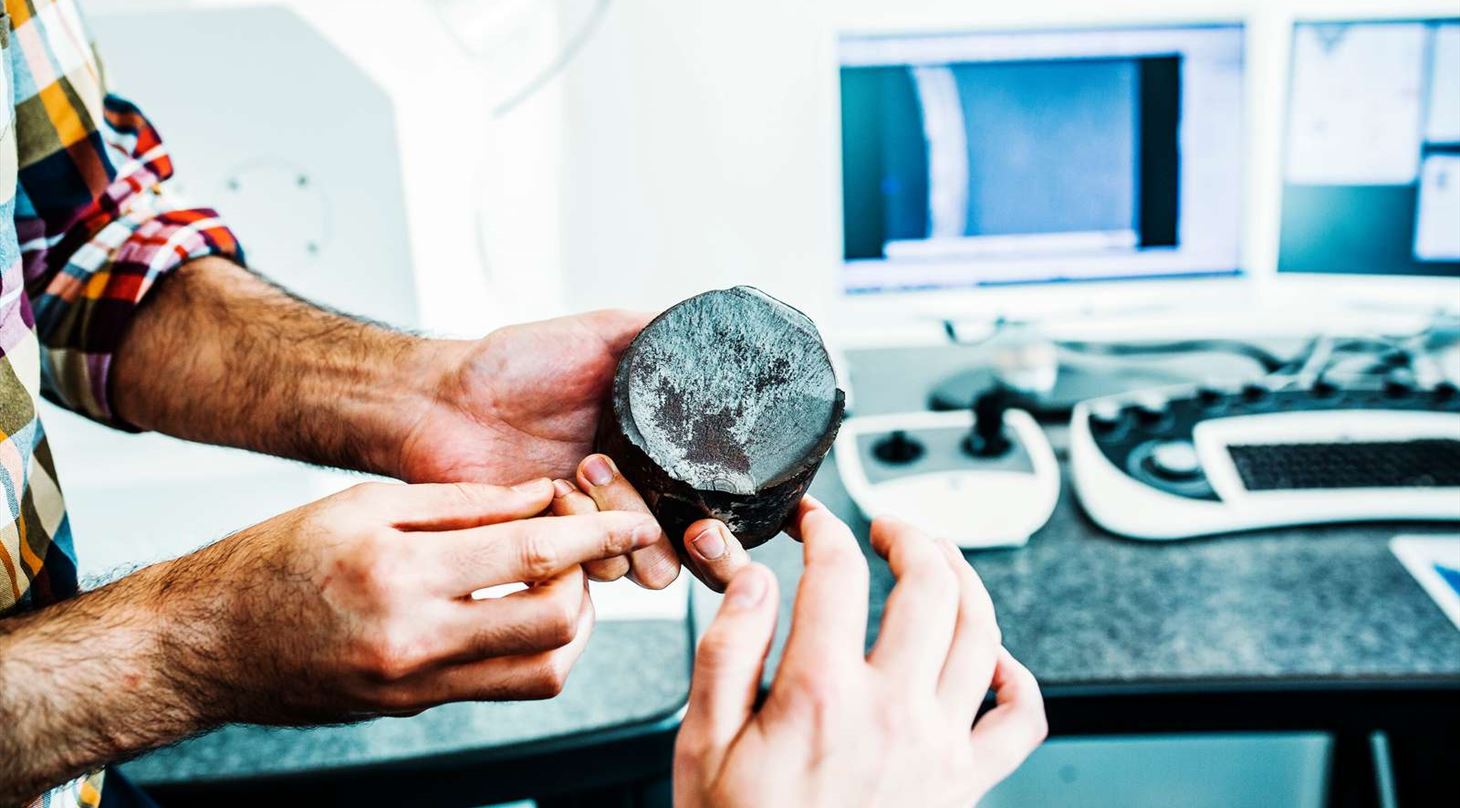
Material structure and defects
With x-ray and neutron measurements, it is possible to look inside materials and map their inner structure. The analyses can provide information on both large and small structures, and e.g. visualize inner defects, cracks, water damage, and distribution of domains in multi-phase materials, magnetic domains, etc.
Macroscopic structures
To obtain the inner structure of a component, imaging/radiography can be applied, giving a resolution down to less than a micrometer. With this method, you see through the sample, and can retrieve images in 2D or 3D (tomography). x-rays are particularly sensitive towards heavy elements and can therefore detect small quantities of these. Neutrons are sensitive towards many of the lighter elements, which makes it possible to detect water or organic material inside metal containers and pipes. Both x-rays and neutrons can map domains of different chemical composition or crystal structure. Furthermore, it is possible to investigate the effect of e.g. heating, humidity, or charge/discharge.
CASES: (in Danish)
Neutronanalyser undersøger sodophobning i partikelfiltre til dieselbiler
Dybere forståelse for ’den gode dej’ skal optimere Lantmännen Unibake’s produkter
Verdens mindste metanol-brændselscelle til høreapparater filmet med neutronkamera
Nanostructure
Many materials contain structure on the nanometer length scale, e.g. fibre structures, nanoparticles, emulsion droplets, polymer networks, pores, or magnetic domains. The size distribution, shape, and orientation of these nanostructures can be determined with small-angle scattering (SAXS or SANS). The atomic or molecular structure of a crystal can be determined with neutron- or x-ray diffraction (XRD). By scanning over a sample, it is also possible to map the spatial distribution of the structures.
Contact our experts to discuss solutions for your specific case.